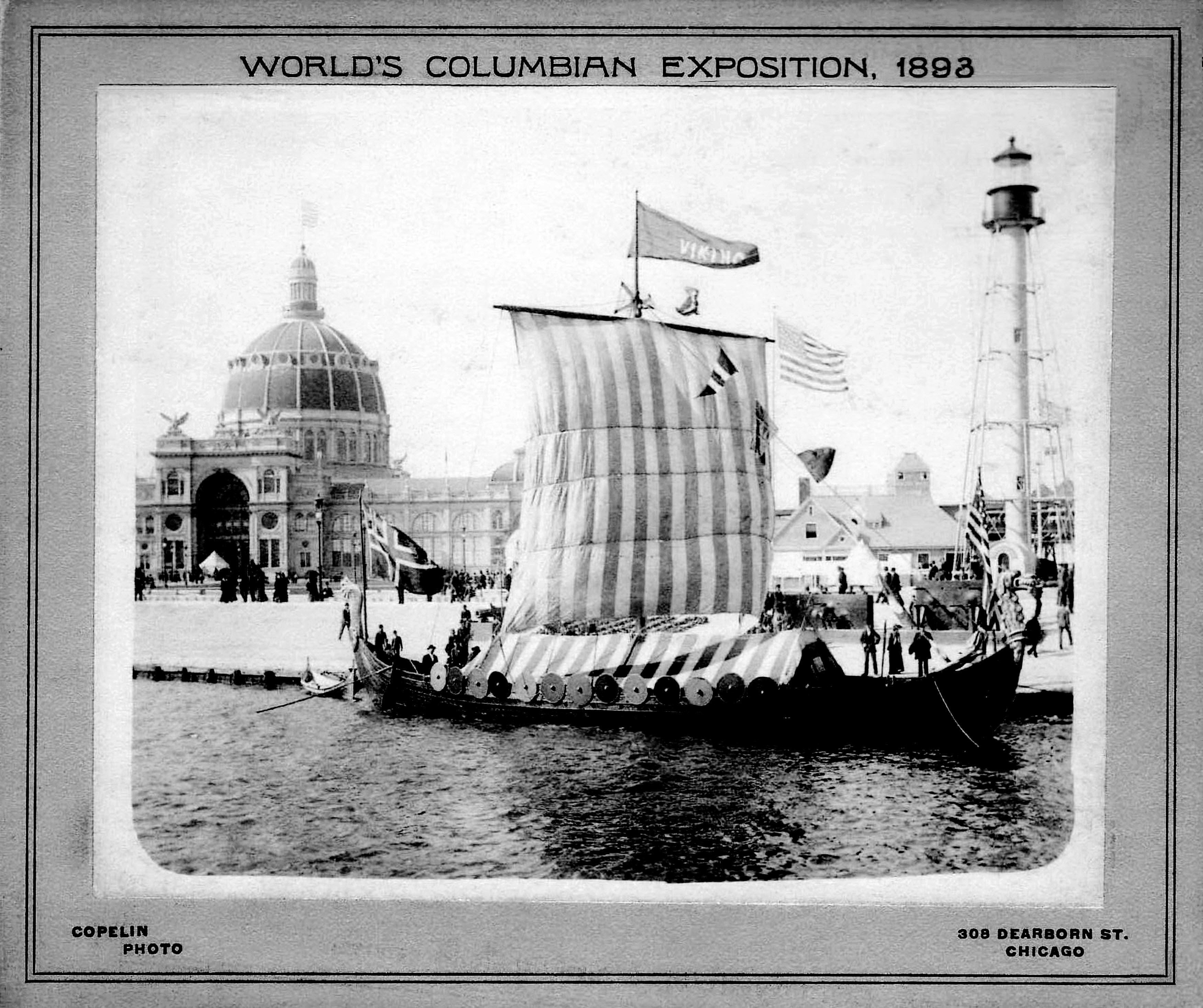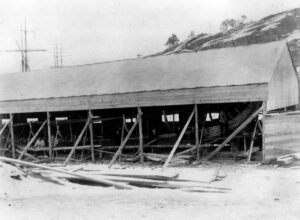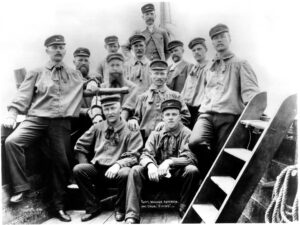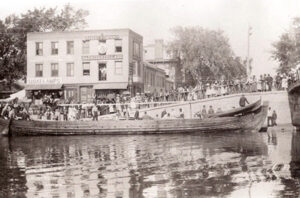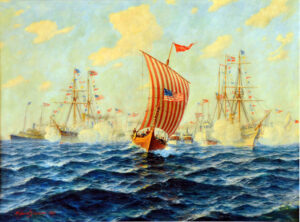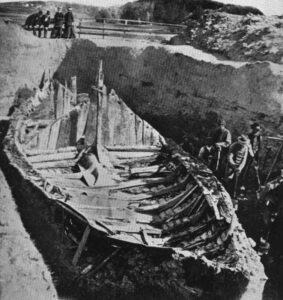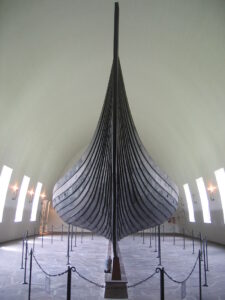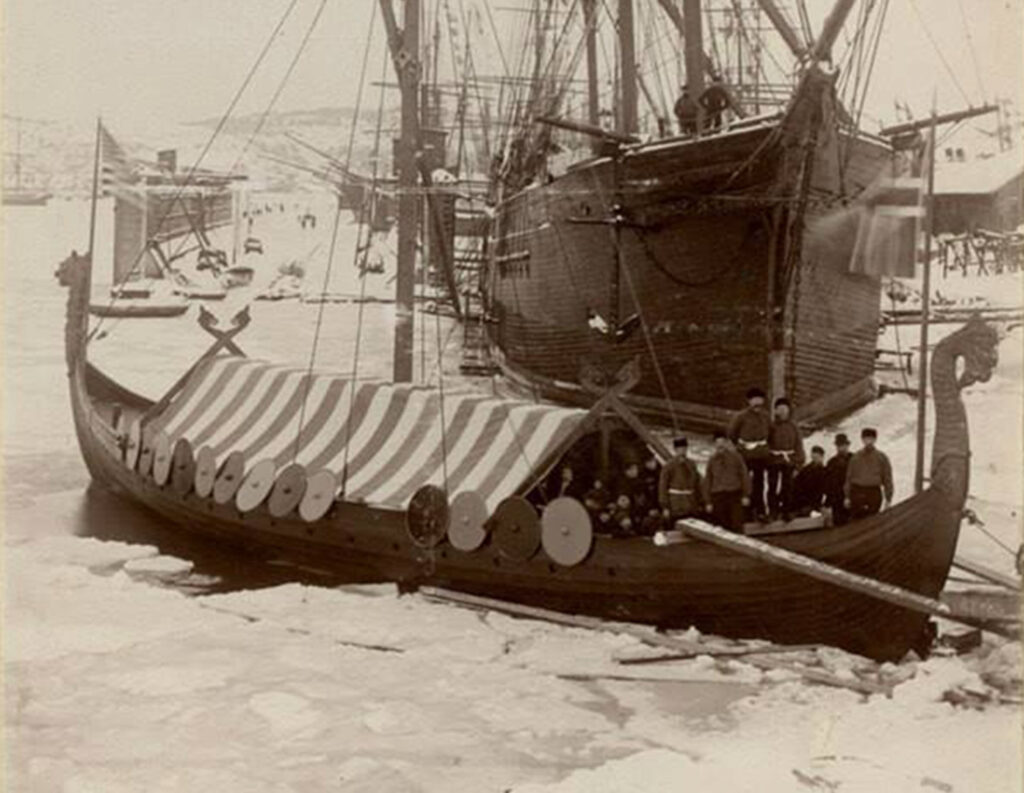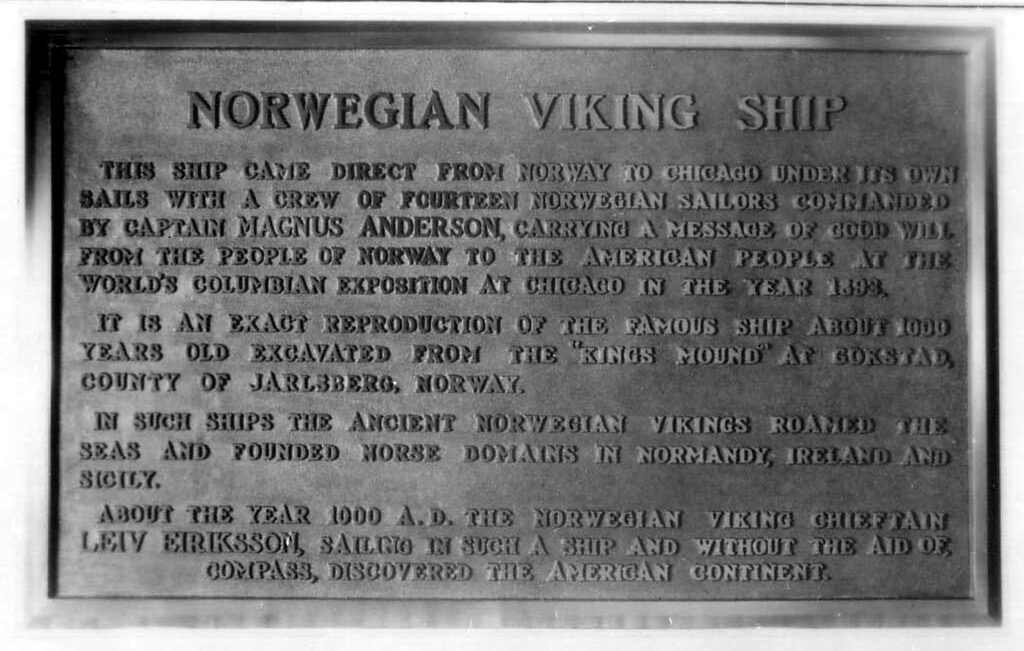Viking now counts five “homes” after her launch in Sandefjord, Norway in 1893 and her voyage to Bergen and onward to Chicago:
- 1893-94: New Orleans, final stop in her journey downriver towards the Gulf of Mexico (her direction until the donation to the Smithsonian fell through) – 1/2 year
- 1894-1919: alongside what is now the Museum of Science and Industry at the northern end of what became Jackson Park – 25 years
- 1920-1994: Lincoln Park just outside the zoo – 74 years
- 1994-1996: the Belden Company yard in West Chicago – 2 years
- 1996 – Present: Good Templar Park in Geneva – 21 years.
Since leaving Lincoln Park, the intention of those caring for her has been to return the ship to Chicago. For 23 years Viking has been resting on that robust semi-mobile steel “cradle” that Belden used to roll her first to West Chicago then two years later onward to Geneva and Good Templar Park, where she sits today. In preparation for possible placement at The Field Museum, museum officials arranged for the company they engage for moving larger pieces into and out of their building to evaluate the ship’s readiness for a move. This was in 2015, and she was pronounced ready to move. FOVS was thrilled that our work to stabilize the ship over the past few years prepared her for a new journey.

But where will that journey lead her? We have a Location Committee headed by board member Roar Broch that has delved deeply into that question. We have considered more than twenty sites, all in the greater Chicago area, including the suburbs as well as towns along her route down to the Illinois River. We have made formal presentations to The Field Museum, the Chicago History Museum, the Swedish American Museum, and to Cantigny Park. While our ship and her advocates have been warmly welcomed, in each case her weight and size have been an issue. Even The Field Museum, which was the Field Columbian Museum and technically the ship’s landlord until moving into the present building on the Museum Campus in 1920, had to conclude that the ship is too big for that very large building. Of course, it is not a small thing that that big museum is already very full.
Our conclusion is that wherever she goes, Viking will need to be under a new roof, in a new enclosure that replaces the changing of the seasons and the vagaries of the elements with careful regulation of heat and humidity. With that said, we have also identified a number of other attributes, both because of what we have learned from her 21 years in Good Templar Park, and from other American and global museums with Viking ships and other large artifacts. Being able to comfortably accommodate groups of children and adults, to tell stories of our own and other ships, to display and conserve exhibits relevant to how the ship is interpreted and perceived, and to celebrate her survival and continuing impact – all of these call for something bigger than the 2800 feet we currently use for her home.
The question of a return to Chicago is complicated by the fact that any public spaces are managed by the city or the county. That is also true if we moved the ship from GTP to another locale in Geneva, or Kane, or another county. For years, discussions of where she could or should go were complicated by too many ideas and too few actual negotiations with actual partners. We view the four formal presentations mentioned above as real negotiations. They were preceded by somewhat less formal discussions with Navy Pier and with the Chicago Maritime Museum.
We have also considered partnering with private developers, but we have not yet moved very far down that path. In each case, questions of what happens in the long term have proven to be bigger than any private entity can answer. Our goal is to manage just one more move – the ship is stable and can be moved, but with each passing year her fragility and vulnerability increases. So we only want to move her once. Nevertheless, we have discussed a 99-year lease in one case, assuming that after such a period a renewal would be likely, but history has shown how much can change in a century of progress.
We assume that no partner would commit to FOVS if the vulnerability of our ship appeared to add significant risk and/or liability. For that reason, we have been discussing how to create a permanent endowment that would fund her upkeep in perpetuity.
With all these things said, we have tried to keep our focus by conducting one negotiation at a time. Having completed all the ones mentioned above, we are now turning our focus to another location in the Chicago area. We are all volunteers, but we want any and all of our proposals and conversations to be at the highest level of professionalism. We also want them to be viewed in the context of the added value Viking can bring to any partner. So we also are proceeding on parallel tracks with our Development Committee. If we can line up strong financial partners, we feel an eventual deal for a permanent home is all the more likely.
With all that said, we are open and eager to talk and think more, all within a context of urgency and, at the same time, deliberation. We have recently visited with four museums in Scandinavia that each counts hundreds of thousands of visitors a year. Another set of tracks is to continue to visit and learn from peers like these. In a future article, we will discuss those visits as well as ones we have made and are planning to other North American sites.



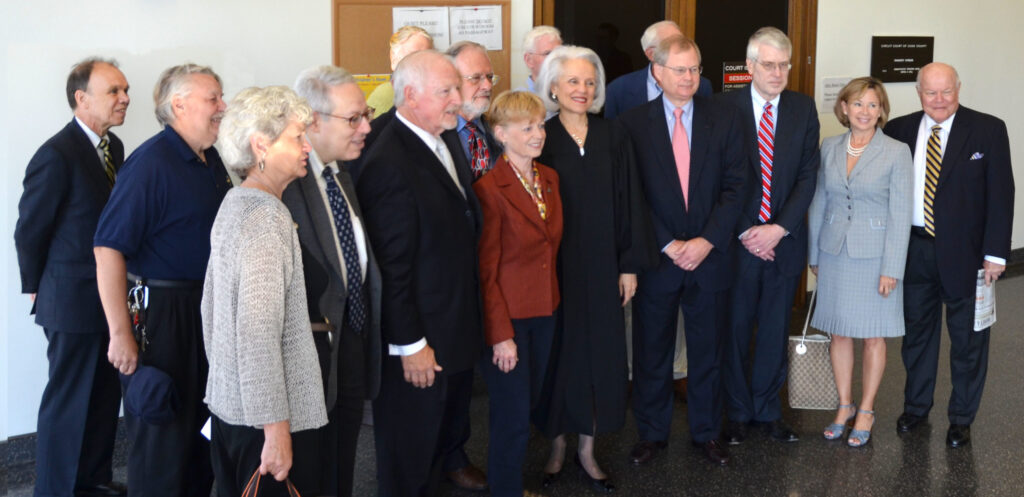

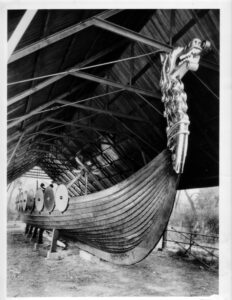
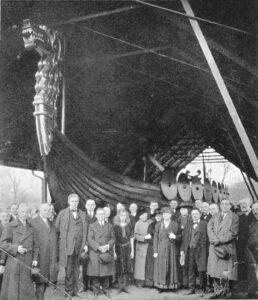

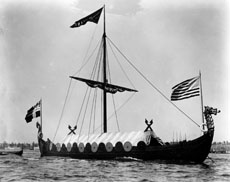 “… and that Viking was the only ship that had sailed over the Atlantic ocean, thereafter gone through the Erie Canal and through the Great Lakes and on down canals and rivers to the Mexican Gulf.”
“… and that Viking was the only ship that had sailed over the Atlantic ocean, thereafter gone through the Erie Canal and through the Great Lakes and on down canals and rivers to the Mexican Gulf.”
